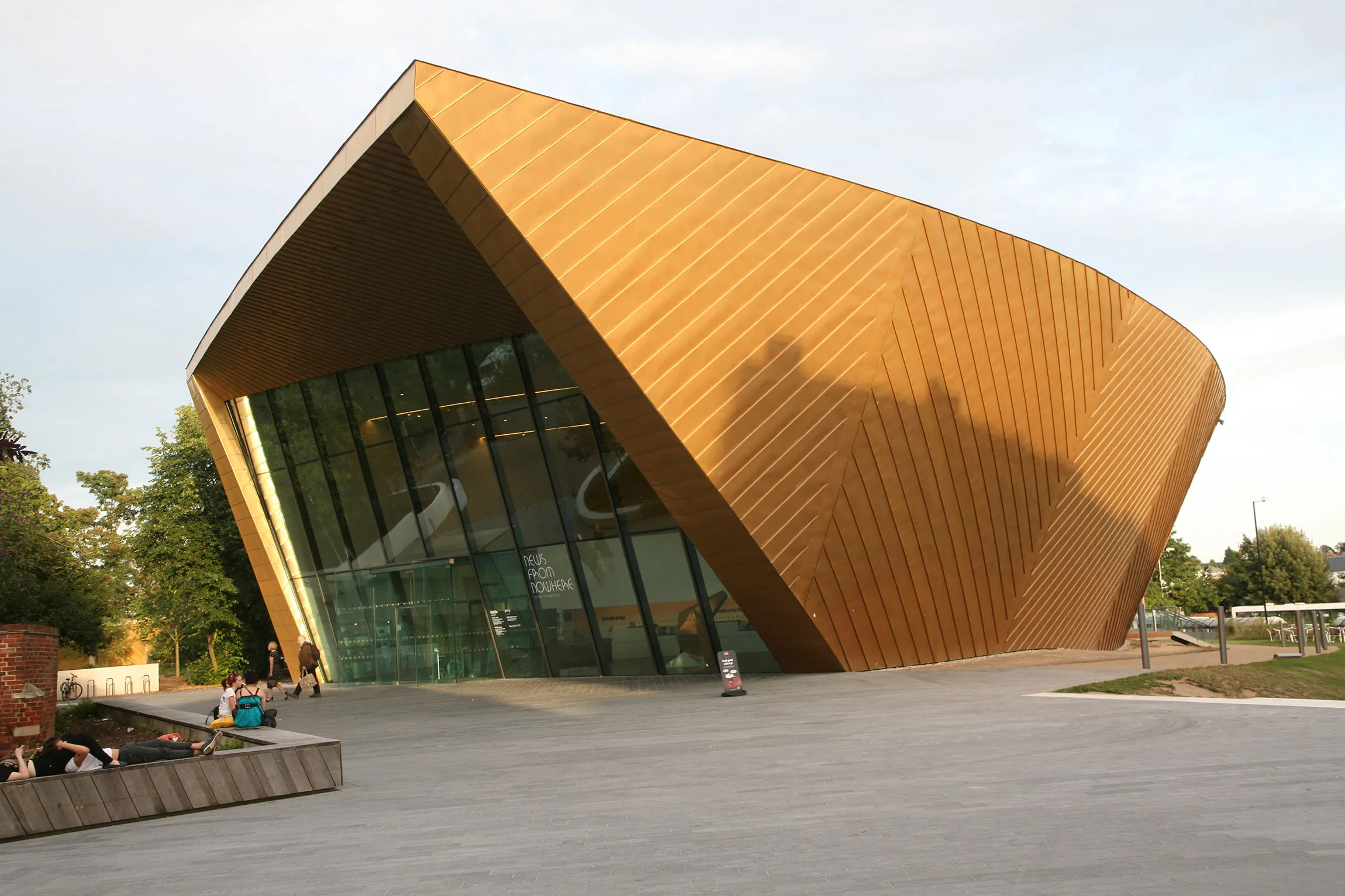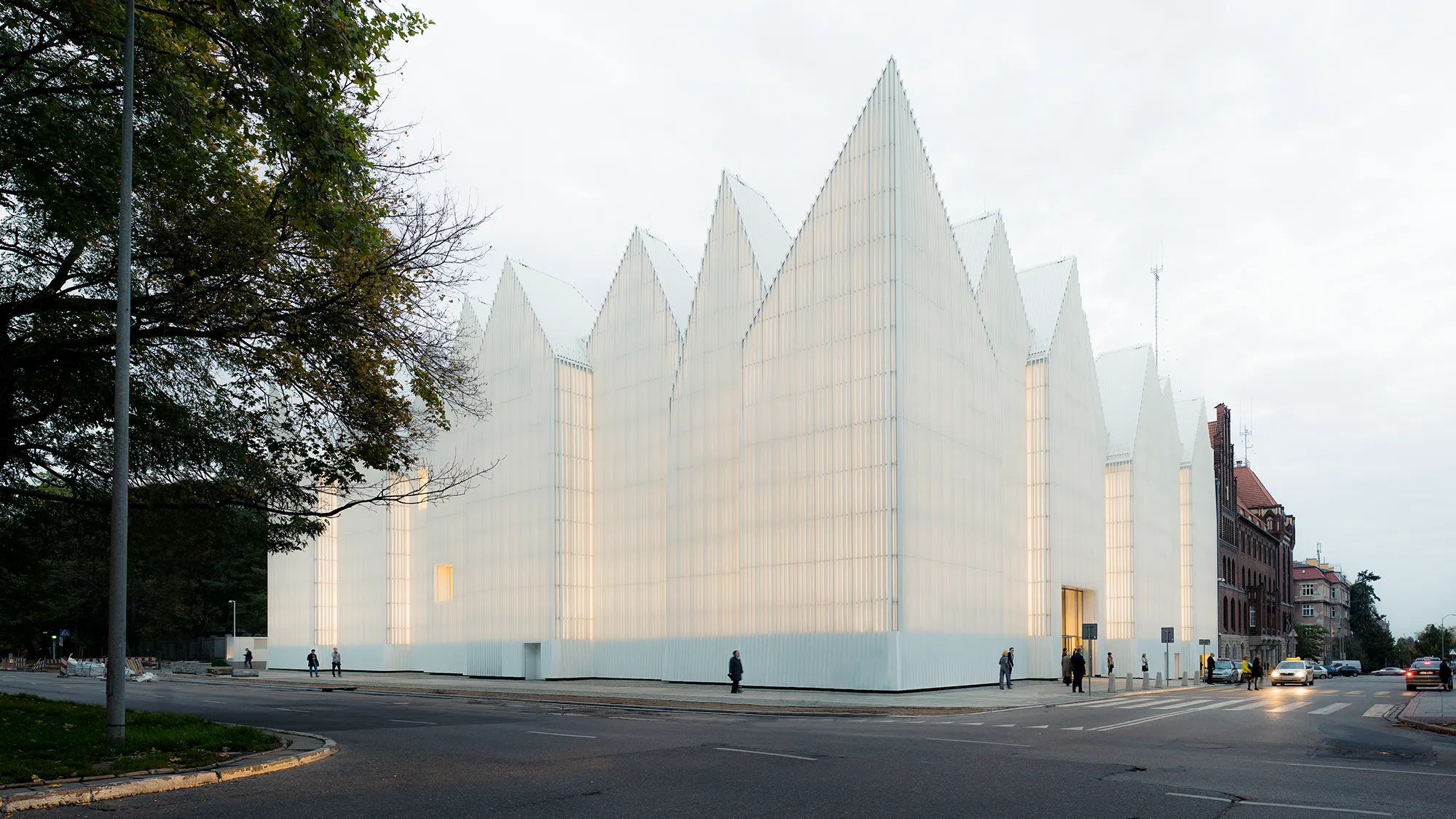Materials In Architecture And Jewelry
In this article, we will explore the similarities and differences between materials in architecture and jewelry design, and how they are chosen, manipulated, and combined to create visually stunning and structurally sound works of art.
Author:George EvansJul 28, 20222K Shares160.2K Views

Materials play a crucial role in both architecture and jewelrydesign, as they determine not only the physical properties of the final product but also its aesthetics and durability. In this article, we will explore the similarities and differences between materials in architectureand jewelry design, and how they are chosen, manipulated, and combined to create visually stunning and structurally sound works of art.
Materials In Architecture
Architecture has always been closely linked to the materials available to the designers and builders of the time. From the earliest mud huts to the latest steel-and-glass skyscrapers, the choice of materials has influenced the way buildings are designed, constructed, and used. Here are some of the most common materials used in architecture, and their characteristics:
Stone
Stone has been used in architecture since ancient times, and is still a popular choice for both structural and decorative purposes. Stone can be cut, shaped, and polished to create a wide range of textures and patterns, and its natural color variations add depth and interest to any design. Stone is also durable and weather-resistant, making it ideal for outdoor use.
Wood
Wood is another traditional building material, prized for its warmth, versatility, and sustainability. Wood can be used for both structural and decorative purposes, and can be shaped and carved to create intricate patterns and designs. Wood is also a renewable resource, and when harvested and processed responsibly, can be a highly sustainable building material.
Concrete
Concreteis a modern building material, first used in the 19th century, and has since become one of the most widely used materials in architecture. Concrete is a versatile, durable, and low-cost material that can be molded into virtually any shape or size. It can also be colored, textured, and finished in a variety of ways to achieve different visual effects.
Brick
Brick Is A Traditional Building Material That Has Been Used For Centuries. It Is Valued For Its Strength, Durability, And Fire Resistance, As Well As For Its Ability To Create Visually Appealing Patterns And Textures. Brick Can Be Laid In A Variety Of Ways To Create Different Effects, And Can Be Colored And Glazed To Achieve A Wide Range Of Visual Effects.
Stone Veneer
Stone veneer is a thin layer of stone that is adhered to a backing material, such as concrete or wood. It is often used as a decorative element on the exterior of buildings, and can create the appearance of a solid stone surface at a lower cost. Stone veneer is available in a wide range of colors and textures, and can be cut and shaped to create a variety of patterns and designs.
Construction Glass
Glass is a relatively new material in architecture, first used in the mid-19th century. Today, it is a popular choice for creating transparent and reflective facades, as well as for windows and skylights. Glass can be colored, tempered, and coated with a variety of materials to enhance its visual and functional properties.
Metals
Metals have been used in architecture for centuries, and are valued for their strength, durability, and malleability. Common metals used in architecture include steel, aluminum, copper, and bronze. Metals can be used for both structural and decorative purposes, and can be shaped and formed into a wide variety of shapes and patterns.
Materials In Jewelry
Jewelry design also relies heavily on the choice of materials, as the type of material used can dramatically affect the look and feel of the final product. Here are some of the most common materials used in jewelry design, and their characteristics:
Precious Metals
Precious metals such as gold, silver, and platinum are highly valued in jewelry design for their beauty, rarity, and durability. These metals can be worked into a wide range of shapes and designs, and can be combined with gemstones and other materials to create stunning works of art.
Base Metals
Base metals such as copper, brass, and nickel are also used in jewelry design. These metals are often less expensive than precious metals, but can be used to create similar looks. They can also be plated with precious metals to achieve a desired look. Base metals are not hypoallergenic, and may cause skin irritation in some people.
Gemstones
Gemstones such as diamonds, rubies, sapphires, and emeralds are prized for their beauty, rarity, and symbolism. These stones can be cut, polished, and set in a wide range of settings to create unique and eye-catching jewelry designs. You can learn more about this topics reading the guide of gemstones and their propertiesin Bernardine.
Pearls
Pearls are a unique and timeless material that has been used in jewelry design for centuries. They are formed inside oysters and mussels, and can be harvested in a variety of sizes, shapes, and colors. Pearls can be used alone or in combination with other materials to create a classic, elegant look.
Glass
Glass is a versatile material that can be used in jewelry design to create a wide range of colors and textures. It can be molded, cut, and etched to achieve different effects. Glass beads are a popular choice for creating intricate, detailed designs in jewelry.
Organic Materials
Organic materials such as wood, bone, and horn are also used in jewelry design. These materials can add a unique texture and color to a piece of jewelry, and are often used in combination with other materials for a one-of-a-kind look. Organic materials can be sustainably sourced, making them a popular choice for eco-conscious consumers.
Alternative Materials
In addition to precious metals and gemstones, jewelry designers also use a wide range of alternative materials to create unique and innovative designs. These materials can include wood, bone, leather, plastic, and even paper. Alternative materials allow designers to experiment with new textures, colors, and shapes, and can lead to stunning and unexpected designs.
Materials In Architecture And Jewelry: Similarities And Differences
While architecture and jewelry design rely on similar materials, there are also some key differences between the two disciplines. Here are some of the main similarities and differences:
Similarities
- While architecture is primarily concerned with the structural properties of materials, jewelry design is more focused on their visual and tactile qualities.
- Architecture often requires materials that are durable and weather-resistant, while jewelry design can use more delicate and fragile materials that are not subjected to the same stresses.
- The scale of the objects also differs, with architecture focusing on large structures and jewelry design on small, intricate pieces.
Differences
- Both architecture and jewelry design often combine different materials to create contrast and interest.
- Both disciplines require an understanding of the physical properties of the chosen materials, including their durability, weight, and texture.
- Both architecture and jewelry design rely heavily on the choice of materials to achieve their desired aesthetic and functional goals.
- Both disciplines use a wide range of materials, from traditional to alternative, to create uniqueand innovative designs.
People Also Ask
What Is Architectural Jewellery?
Architectural jewelleryis a type of jewelry design that is inspired by architectural elements and structures. It is a unique and modern approach to jewelry design that often incorporates geometric shapes, linear forms, and intricate details that are reminiscent of buildings, bridges, and other architectural elements. Architectural jewelry is often made from metals such as gold, silver, and brass, and may include gemstones or other materials to create a contemporary, sophisticated look.
What Are The 5 Elements Of Design In Jewelry?
The 5 elements of design in jewelry are:
- Color: The use of color is an important element in jewelry design. Different gemstones, metals, and materials can be combined to create a range of colors and hues.
- Form: Form refers to the shape and structure of the jewelry piece. This can range from simple and minimalist designs to more intricate and detailed pieces.
- Texture: Texture is the surface quality of the jewelry piece. It can be smooth, rough, shiny, or matte, and can be created through the use of different materials and techniques.
- Line: Line refers to the direction and flow of the design. This can be achieved through the use of geometric shapes and linear forms.
- Space: Space refers to the overall composition and balance of the jewelry piece. It involves the arrangement of the different elements of the design to create a harmonious and visually appealing piece.
What Are Accessories In Architecture?
Accessories in architecture are decorative elements that are used to enhance the aesthetic appeal of a building or space. They may include items such as door handles, light fixtures, and hardware. Accessories can be used to add a touch of style and personality to a space, or to highlight specific architectural features. Accessories can be made from a variety of materials, including metal, glass, and wood, and can be designed to match the overall style and aesthetic of the building.
Conclusion
Materials are an essential element in both architecture and jewelry design, as they determine not only the physical properties of the final product but also its aesthetics and durability. Whether creating a towering skyscraper or a delicate necklace, the choice of materials can greatly influence the success of the design.
By understanding the similarities and differences between the materials used in these two disciplines, designers can create truly unique and innovative works of art that stand the test of time.

George Evans
Author
George Anderson, an exceptional architectural designer, envisions and brings to life structures that transcend the realm of imagination. With an unwavering passion for design and an innate eye for detail, George seamlessly blends form and function, creating immersive spaces that inspire awe.
Driven by a deep appreciation for the interplay of space, light, and materials, George's innovative approach redefines the possibilities of architectural design. His visionary compositions leave an indelible mark, evoking a sense of wonder and transforming the built environment.
George Anderson's transformative designs and unwavering dedication continue to shape the architectural landscape, pushing the boundaries of what is possible and inspiring generations to come.
Latest Articles
Popular Articles


